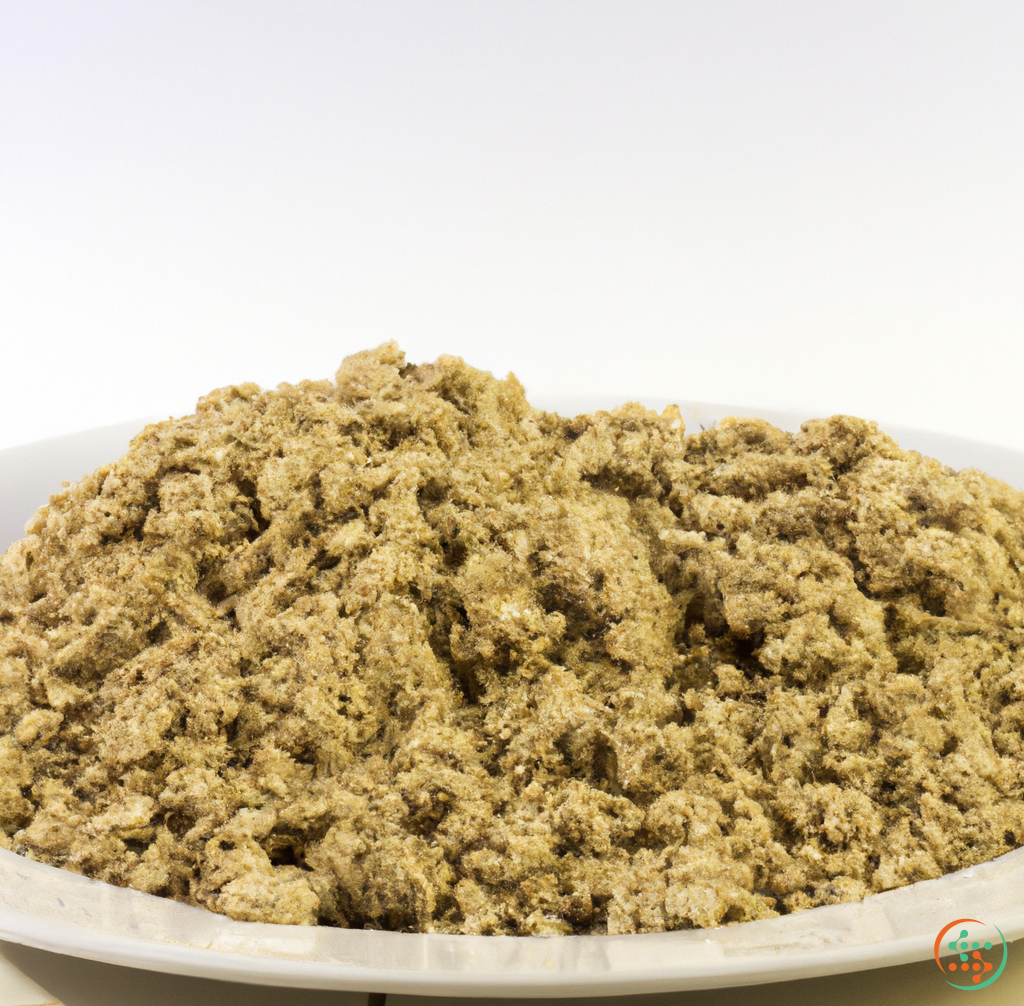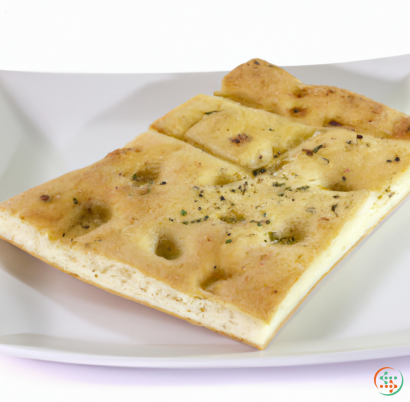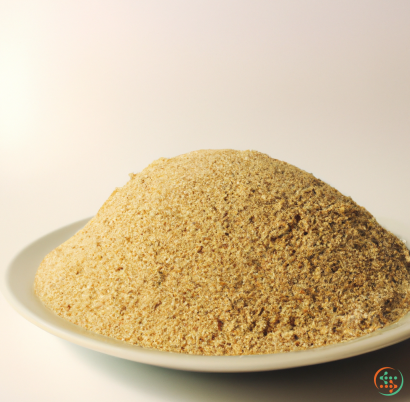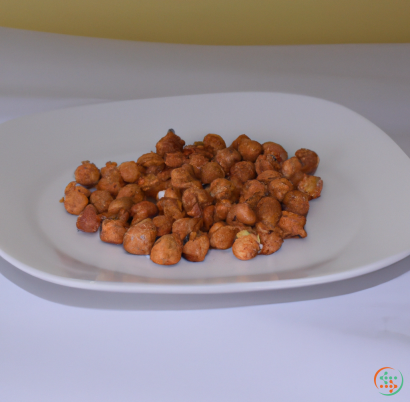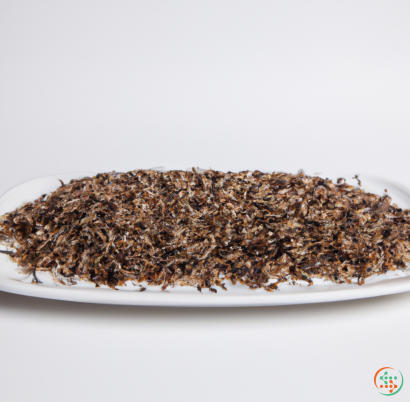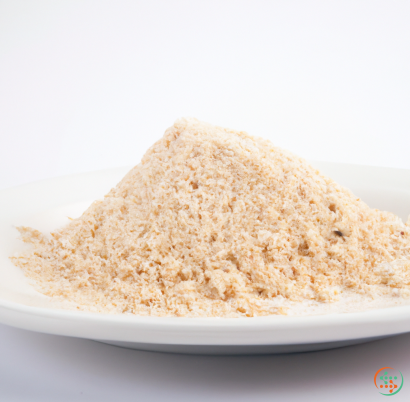Wheat Bran
.
When someone hears the term, “wheat bran”, it might not mean much, especially to a person who is not a nutrition or health expert. However, wheat bran is an incredibly valuable and healthy ingredient, and it’s important to understand what wheat bran is in order to make better food choices.
Wheat bran is a byproduct of processing wheat into flour and is therefore often considered an industrial waste product. Although it may be discarded during the flour production process, wheat bran can also be used to make nutritious food products in its own right. In its most basic form, wheat bran is simply the brown, outer layer of the wheat kernel which is usually removed as part of the grinding process.
Wheat bran offers nutritional benefits which are not provided by white flour. This layer of the wheat kernel contains essential vitamins, minerals, and dietary fiber which help to keep the body healthy. Wheat bran contains high amounts of B-vitamins and minerals such as phosphorus, potassium, magnesium, zinc, and iron. Additionally, wheat bran is an excellent source of dietary fiber, with studies showing that it can contain up to 16% fiber depending on the variety of wheat kernel used.
The high fiber content of wheat bran makes it a valuable addition to any diet. Dietary fiber helps to keep the body regular and promotes healthy digestion. It is also beneficial for heart health and has been linked to lower cholesterol levels. Additionally, the high fiber content of wheat bran can help you to feel fuller for longer, which can make it easier to maintain a healthy weight.
Wheat bran can also be used to give food a nutty flavor. For example, it can be used as a topping for hot or cold cereals and in baked goods. It can also be used to thicken soups, stews, and casseroles. This can be an effective way to increase the nutrient content of a meal without adding excessive calories.
It’s important to note that wheat bran does contain gluten and is therefore not suitable for individuals who are gluten intolerant. Additionally, wheat bran can contain high levels of oxalates and phytic acid, which can reduce the availability of certain minerals. Therefore, wheat bran should be eaten in moderation and it is recommended that you consult with a nutritionist before making any drastic dietary changes.
Overall, wheat bran is an incredibly beneficial ingredient which can be added to almost any diet. It is an excellent source of dietary fiber, vitamins, and minerals which can help to promote good health and easy digestion. Furthermore, it can also be used to add a nutty flavor to food without adding excessive calories. It is important to note, however, that wheat bran is not suitable for individuals with gluten sensitivity and should be consumed in moderation.
Wheat Bran: From Farm to Table
Wheat is one of the most important crops around the world and is used in a variety of foods. Wheat bran is an important part of helping to make these foods, yet many are unaware of the journey it takes before it reaches their dinner plate. To understand this journey we must first understand wheat bran itself.
What is Wheat Bran?
Wheat bran is the outer layer of the wheat kernel and the part of the grain which is most commonly removed during the milling process. This layer contains significant amounts of dietary fiber and helps increase the nutritional value of the final products. Wheat bran is created when the rough outer layers (pericarp and testa) are removed from the wheat kernel by means of sieving and/or milling. This process is a direct result of the ‘flour milling’ procedure. The flour milling process removes the bran and germ layers to dissolve the endosperm, which is then sieved and milled into a fine flour. This is the main reason why wheat bran is often removed from the kernel and sold separately.
From Field to Store
Wheat Bran starts its journey on the farm. Wheat is grown on farms all across the world, and is harvested in the fall. The harvested wheat is stored in large warehouses and eventually transported to a mill. The milling process begins with the wheat being separated into its components, including the bran. The bran is then sifted and milled using special machines to extract the nutrient-rich layer.
Once the wheat bran is milled, it is packaged and sent off to stores and other locations to be sold and consumed. In some cases, it may also be added to various foods, such as bread and cereal products, as an additional nutrient source.
Nutritional Benefits of Wheat Bran
Wheat bran is considered to be a nutrient powerhouse and offers numerous health benefits. It is an excellent source of dietary fiber and is high in essential minerals such as magnesium, zinc, and phosphorous. Wheat bran also contains B-vitamins and can help reduce cholesterol levels in the body. Studies have shown that adding a small amount of wheat bran to the diet can help lower the risk of heart disease and diabetes.
In addition to its nutritional benefits, wheat bran also helps to improve digestion and regularity. The fiber content helps to support the digestive system and can help to reduce the risk of bloating and constipation. Furthermore, wheat bran is naturally low in fat and has no cholesterol, making it a healthy addition to any diet.
From Store to Table
Once wheat bran is created and packaged, it is then sold in supermarkets and other stores. It can be bought in various forms, including flakes, granules, and even powder. Depending on what form it is bought in, it can be used for a variety of recipes, from vegan cakes and muffins to smoothies and dishes.
It is important to note that wheat bran can spoil quickly if not stored correctly. To keep it at its freshest, it should be kept in an airtight container in a cool, dry place. It should be consumed within a few months of purchase for optimal freshness.
Using Wheat Bran
There are many delicious dishes that can be made with wheat bran. It can be used to make porridge and oatmeal, as well as baked goods such as muffins and cookies. It can also be added to smoothies and juices to provide additional nutrition.
Wheat bran can also be used to create savory dishes such as soups and casseroles. When cooking with wheat bran, it is important to take note of the nutritional content of the dish, as combining it with other nutrient-rich items can help to make a wholesome meal.
Conclusion
Wheat bran is an important, nutrient-packed part of the grain kernel, and it plays an important role in making many delicious dishes. Its journey from the farm to the table is an interesting one, as it passes through different stages of production and packaging before being sold in stores.
Wheat bran is a great source of dietary fiber and essential minerals, and can be used for a variety of recipes, from baked goods and smoothies to savory dishes. By following the proper storage instructions, it can be kept fresh and enjoyed for many months.
| Beta-Carotene | 0.006 mg | |
| Vitamin E | 0.00149 grams | |
| Vitamin K | 0.0019 mg | |
| Vitamin B1 | 0.52 mg | |
| Vitamin B2 | 0.58 mg | |
| Vitamin B3 | 0.01358 grams | |
| Vitamin B4 | 0.0744 grams | |
| Vitamin B5 | 0.00218 grams | |
| Vitamin B6 | 0.0013 grams | |
| Vitamin B9 | 0.079 mg |
| Calcium | 0.073 grams |
Daily Value 1.3 g
|
| Iron | 0.01057 grams |
Daily Value 0.018 g
|
| Magnesium | 0.611 grams |
Daily Value 0.4 g
|
| Phosphorus | 1.013 grams |
Daily Value 1.25 g
|
| Potassium | 1.182 grams |
Daily Value 4.7 g
|
| Sodium | 0.002 grams |
Daily Value 2.3 g
|
| Zinc | 0.00727 grams |
Daily Value 0.011 g
|
| Copper | 0.001 grams |
Daily Value 0.9 mg
|
| Manganese | 0.0115 grams |
Daily Value 0.0023 g
|
| Selenium | 0.0776 mg |
Daily Value 0.055 mg
|
| Tryptophan | 0.282 grams | |
| Threonine | 0.5 grams | |
| Isoleucine | 0.486 grams | |
| Leucine | 0.928 grams | |
| Lysine | 0.6 grams | |
| Methionine | 0.234 grams | |
| Cystine | 0.371 grams | |
| Phenylalanine | 0.595 grams | |
| Tyrosine | 0.436 grams | |
| Valine | 0.726 grams | |
| Arginine | 1.087 grams | |
| Histidine | 0.43 grams | |
| Alanine | 0.765 grams | |
| Aspartic Acid | 1.13 grams | |
| Glutamic Acid | 2.874 grams | |
| Glycine | 0.898 grams | |
| Proline | 0.882 grams | |
| Serine | 0.684 grams |
| Total Sugars | 0.4 grams |
per 100g
|
| Myristic acid (14:0) | 0.01 grams |
|
| Palmitic acid (16:0) | 0.56 grams |
|
| Stearic acid (18:0) | 0.04 grams |
|
| Total Saturated fatty acids: | 0.61 g | |
| Oleic acid (18:1) | 0.62 grams |
|
| Palmitoleic acid (16:1) | 0.02 grams |
|
| Total Monounsaturated fatty acids: | 0.64 g | |
| Linolenic acid (18:3) | 0.17 grams |
|
| Linoleic acid (18:2) | 2.04 grams |
|
| Total Polyunsaturated fatty acids: | 2.21 g | |
